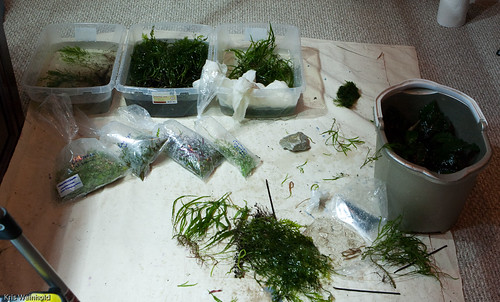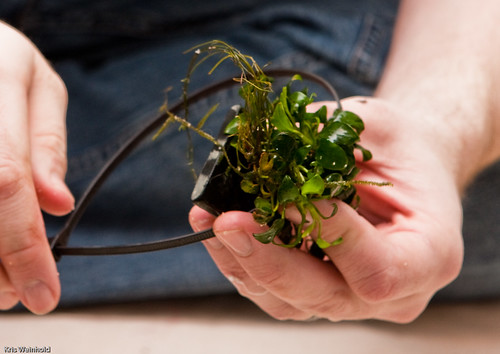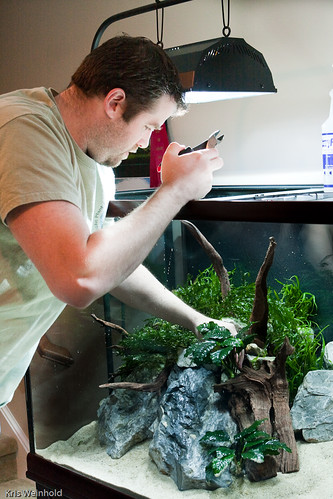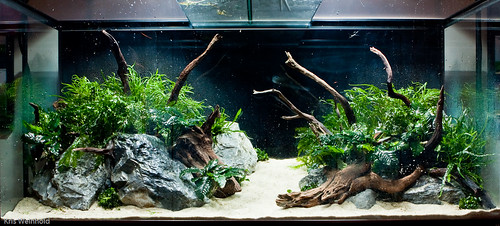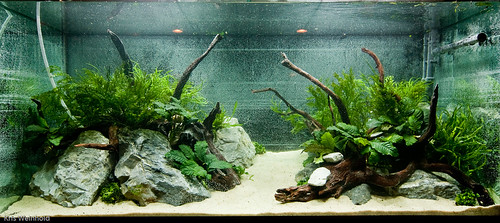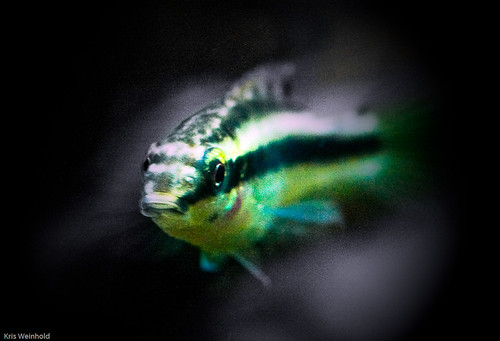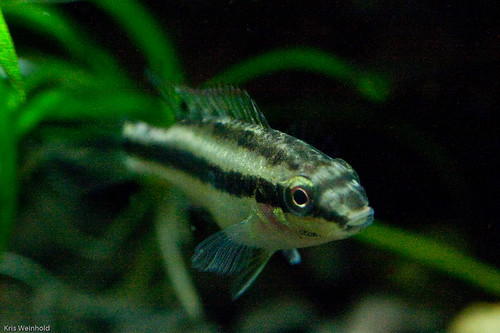Scaping with Baliban (Monster 180G Scape)
December 15th, 2009This weekend, Jason Baliban, award-winning aquascaper and recent judge of the AGA contest, invited a few GWAPA and DVAGA members to his home to aquascape a brand new 180G aquarium. He had obtained the aquarium a few months ago, and spent that time acquiring the materials needed to set it up.
When I arrived, he already had his hardscape setup and ready to go. He had the patience to spend much of the past few months tweaking the hardscape so that it would be perfect. This is always the hardest and most critical element in aquascaping, but as you can see below, the rocks and wood look pretty solid.
One of the goals for this tank was to set it up and let it mature without much regular maintenance. Therefore, he choose to only use four types of easy plants: Needle-Leaf Java Fern, Trident Java Fern, Bolbitis, and Anubias. Due to the very large size of the tank (roughly 6’x2’x2′), he had to amass a significant number of plants.
Since none of these plants were to be rooted in the substrate, he only used pool filter sand as a substrate. Of course, this means that Jason will need to fertilize the aquarium regularly to provide nutrition to the plants. Pretty much all of the plants were positioned in the aquarium by using zip-ties to attach them to rocks, then placing the rocks into the hardscape.
Jason placed Anubias in the front of the tank, letting Bolbitis and Java Fern in the background. He decided to leave the wood free of moss, at least for the time-being. We planted the aquarium 100% dry, so the plants needed to be sprayed with a water bottle periodically to prevent them from drying out.
Due to Jason’s great planning and preparation, it probably only took 20-30 minutes to plant the aquarium. You can see below that it looked pretty darn good even without water in the tank.
Filling a tank with 180 gallons of water takes a long time! We sat around talking about plants, aquascaping, and sports while we waited over an hour for the water to reach the rim. Jason was a little worried that the wood might float, so you can see that he weighed down a few pieces with extra rocks to let them saturate with water.
I’m really glad that I was able to make it up to Jason’s house for this aquascaping. As one of the premier aquascapers in the U.S., there’s always something you can learn from him. It doesn’t hurt that he’s a quality person as well! Be sure to pop over to Jason’s website at ProjectAquarium.com to let him know what you think of the scape. (You can leave comments here too.)


